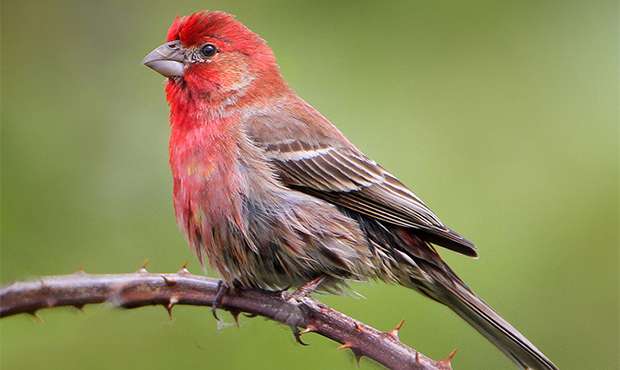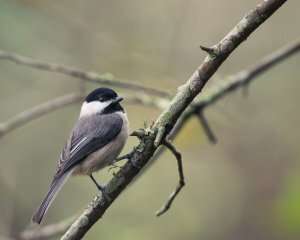Them's fightin' birds: Study identifies other species' influence on territorial aggression

A social behavior known as the "audience effect" has long been reported among humans. From children tussling on a playground to a sports team's home field advantage, competitors can be influenced by who is watching.
"Because the audience effect has been a focus of human research for so long, animal researchers started observing the same behavior in fish and birds and many other species," said Katie Sieving, a University of Florida professor whose studies focus on birds. "But until now, animal research on this topic nearly always considered audience effects to be a within-species phenomenon. For example, a male fighting fish might fight harder when a female watches the fight."
To investigate whether the same effect occurred with multiple species in the audience, Sieving and a team of researchers considered two bird species that often share the same habitat, the tufted titmouse and Carolina chickadee. Their findings, published in the journal Ecology and Evolution, show that it's not just birds of the same feather that flock together around a fight.
"It's pretty common to see aggressive interactions between individuals of the same species. Maybe two titmice start fighting, and we'd notice the cardinals and the jays would stay and watch," said Sieving, a faculty member in the UF/IFAS department of wildlife ecology and conservation. "We've noticed these other species' behaviors, but it didn't click until this study that those other species could be influencing the fighters, as well."

Sieving said birds in the same community frequently listen to one another to identify concerns for their own success, including habitat quality and alerts on nearby predators. Other species' curiosity in intraspecies aggression could also be of interest, she added.
"One of our ideas is that the birds coming in to watch the fight want to see how hard their local titmouse is willing to fight for the territory," Sieving said. "The harder they fight, the more likely their own habitat in the same neighborhood is worth fighting for."
"Concerning the effect of the diverse audiences on the aggressors, one of the most exciting findings was that the more species are present watching a titmouse engaged in a squabble, the harder the titmouse fights," she continued. "A harder fight means you're more conspicuous to local predators who may be watching but unseen, but if it draws other birds for the predator to eat instead of you—hawks and other predators have been documented to go for the largest prey available—then you're safe and can make a lot of noise to defend your territory."
To conduct the study, Sieving's former student Jin Bai, a 2019 graduate of the UF/IFAS College of Agricultural and Life Sciences, used locations throughout Gainesville, Florida, and nearby forested areas. After locating a "happily foraging" titmouse or chickadee, as Sieving described the species' contented chirps, he would play a recording of either species' distinct aggressive call and observe the reaction. According to the study, calls by the same species drew more aggressive and consistent reactions, but interspecies effects were also regularly observed.
"The titmouse and the chickadee are among the most vocally complex species," Sieving noted as a reason for studying these species. "The signals they give are very contextualized. Their signals are different when they're looking at a predator or if they're in a habitat that's been degraded or if they spot a feeder full of food. When these birds are chattering away, the other birds nearby likely benefit from the information they convey."
And when birds hear and respond to other species signals concerning threats, good food sources, or aggressive neighbors, Sieving likens it to a person scrolling through their Twitter feed: Some tweets draw attention, and many times, it's the nasty ones that get the most attention.
"Increasingly," Sieving said, "I find parallels between behaviors in humans and birds, whose intelligence and sophistication should not be underestimated."
The study is available now in the journal Ecology and Evolution.
More information: Jin Bai et al. A community context for aggression? Multi‐species audience effects on territorial aggression in two species of Paridae, Ecology and Evolution (2021). DOI: 10.1002/ece3.7421
Journal information: Ecology and Evolution
Provided by University of Florida




















